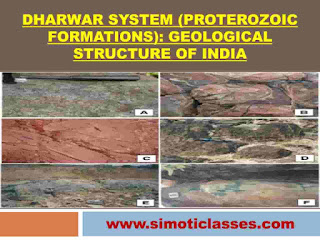Chotanagpur Kashtkari Adhiniyam 1908 Part-4
अध्याय 8 :-जोतों और भूघृतियों के पट्टे और अंतरण (धारा- 44 से 51)
➧ धारा - 44 :- रैयत का पट्टे का अधिकार होना
➧ प्रत्येक रैयत अपनी भूस्वामी से पट्टा प्राप्त करने का अधिकारी होगा। पट्टे में सभी बातें जैसे - भूमि का क्षेत्रफल, वार्षिक लगान, भुगतान की किस्ते और अन्य शर्तें उल्लेखित होती हैं।
➧ धारा -45 :- भूस्वामी का प्रतिलेख वचनबंध के लिए हकदार होना
➧ जब कोई भूस्वामी किसी का काश्तकार को कोई पट्टा देगा तो गोस्वामी पट्टा के शर्तों के अनुरूप एक प्रतिलेख पाने का हकदार होगा ।
➧ धारा -46 :- रैयतों द्वारा अपने अधिकारों के अंतरण पर प्रतिबंध
(i) यदि अधिभोगी रैयत अनुसूचित जनजाति (एस.टी) का सदस्य हो, तो उपायुक्त के अनुमति से अपनी जोत के किसी भाग को विक्रय, दान या अंतरण कर सकता है बशर्ते की खरीदार रैयत उसी स्थानीय निवासी हो और अनुसूचित जाति का सदस्य हो ।
(ii) यदि अधिभोगी रैयत अनुसूचित जाति या पिछड़े वर्ग का सदस्य हो, तो उपायुक्त के अनुमति से अपनी जोत या उसके किसी भाग को विक्रय, विनियम, दान, वसीयत या पट्टे द्वारा किसी व्यक्ति को दें (अंतरण) कर सकता है बशर्ते कि खरीदार व्यक्ति अनुसूचित जाति या पिछड़े वर्ग का सदस्य हो और उसी जिले का निवासी हो ।
(iii) यदि कोई अधिभोगी रैयत अपनी जोत या उसके किसी भाग का अंतरण, बिक्री, वसीयत, दान के द्वारा किसी कोऑपरेटिव सोसाइटीज को, राष्ट्रीकृत बैंक या केंद्र सरकार या राज्य सरकार के कोई उपक्रम को करना चाहता है, तो कर सकता है ।
(iv) यदि कोई भोगी रैयत सामान्य जाति का सदस्य हो तो वह किसी को भी अपनी भूमि बिक्री कर सकता है।
(v) अधिभोगी रैयत अपने जोत या उसके किसी भाग का 5 वर्ष से अधिक अवधि के लिए विक्रय, दान या संविदा (कॉन्ट्रैक्ट) नहीं कर सकता ।
(vi) यदि अधिभोगी रैयत अपनी जोत या उसके किसी भाग को चाहे, तो 7 वर्ष से कम अवधि के लिए भुगतबंध बुक बंद कर सकता है ।
(vii) अगर कोई अधिभोगी रैयत चाहे, तो बिहार और उड़ीसा सहकारी समिति अधिनियम 1935 के अधीन रजिस्ट्री कृत कंपनी को 15 जुलाई 15 वर्ष हेतु अपनी भूमि भुगतबंध बंधक कर सकता है।
(viii) अगर किसी जोत या उसके भाग के संबंध में ऐसा वाद (केस)कोर्ट में लंबित हो जिसमें एक पक्ष अनुसूचित जनजाति का सदस्य हो और दूसरा पक्ष गैर अनुसूचित जनजाति का सदस्य हो, तो ऐसे मामले में उपायुक्त को तीसरा पक्षकार अवश्य होगा । (धारा- 46 , 3 'क')
(ix) अगर कोई रैयत ने जिस समय अवधि के लिए किसी व्यक्ति को जमीन अंतरित किया हो, समय अवधि समाप्त होते ही 3 वर्ष के भीतर रैयत के आवेदन पर, उपायुक्त रैयत को जमीन वापस दिलाएगा । (धारा-46, 4)
(x) अगर कोई जोत धारकया रैयत उपायुक्त के पास इस बाबद आवेदन दे, कि उसके भूमि का अंतरण के मामले में उचित प्रक्रिया का पालन नहीं किया गया है, तो उपायुक्त ऐसे आरोपों की जांच करेगा, परंतु यह आवेदन उपायुक्त तभी स्वीकार करेगा, जब जोत धारक ने अपनी भूमि के अंतरण की तारीख से 12 वर्ष के समय अवधि के भीतर आवेदन प्रस्तुत किया हो। (ऐसे मामलों में डी.सी. स्वत: भी संज्ञान ले सकता है।) (धारा-46, 4 'क')
(xi) अगर उपायुक्त जांच के पश्चात यह पाता है, कि किसी जोत धारक की भूमि अंतरण में आवश्यक नियम का उल्लंघन नहीं हुआ है, फिर भी जोतधारक ने आवेदन प्रस्तुत किया है, तो उपायुक्त आवेदन को रद्द कर देगा तथा आवेदनकर्ता को मामले में होने वाले खर्च का भुगतान करने का आदेश देगा। (धारा-46, 4, 'ख')
(xii) यदि जांच के बाद उपायुक्त यह पाता है, कि खरीदार पक्ष ने नियम का उल्लंघन करते हुए भूमि का अंतरण अपने पक्ष में कराया है, तो वह जमीन खरीदार पक्ष (अंतरिती) से वापस लेकर विक्रयकर्ता (अंतरक) को उसकी जमीन पर दखल वापस दिलाएगा ।
➧ परंतु यदि खरीदार (अंतरिती) पक्ष ने जोत भूमि पर भवन या संरचना का कार्य निर्मित कर लिया हो, और विक्रयकर्ता (अंतरक) उसके मूल्य का भुगतान नहीं करना चाहता हो, तो उपायुक्त खरीदार पक्ष को यह आदेश देगा कि, वह 2 वर्ष के भीतर अपने निर्मित संरचना को हटा लें ।
➧ परंतु यदि उपायुक्त को यह जानकारी प्राप्त हो जाये कि खरीदार पक्ष ने जोत भाग पर संरचना का निर्माण छोटानागपुर अभिघृति अधिनियम 1969 के आरंभ से पहले कर लिया है, उस स्थिति में नियम का उल्लंघन होने के बावजूद भूमि अंतरण को विधि की मान्यता दे देगा। ऐसी स्थिति में खरीदार पक्ष समतुल्य मूल्य की भूमि निकट के किसी वैकल्पिक जोत या भाग में उपलब्ध करा दें या उपायुक्त द्वारा निर्धारित की गई राशि का भुगतान कर कर दे। सामान्य तौर पर इससे ही कम्पनसेशन कहा जाता है। (धारा-46, 4, 'ग')
➧ धारा -47 :- न्यायालय आदेश के जरिए रैयती अधिकार के विक्रय पर प्रतिबंध
➧ किसी न्यायालय के द्वारा किसी रैयत को उसकी जोत या उसकी किसी भाग के विक्रय के लिए कोई आदेश या डिक्री नहीं पारित किया जाएगा । परंतु निम्न परिस्थितियों में समाना लें परिस्थितियों में न्यायालय द्वारा रैयत के जोत को विक्रय का आदेश जारी किया जा सकता है।
(i) जोत के संबंध में बकाया लगान की वसूली के लिए ।
(ii) किसी बैंक ऋण या उधार रकम की वसूली हेतु।
(iii) बिहार, उड़ीसा लोक मांग वसूली अधिनियम द्वारा उपबंधित प्रक्रिया के अधीन परंतु उपरोक्त परिस्थिति में किसी जमीन का विक्रय हो रहा तो भी अनुसूचित जाति या अनुसूचित जनजाति के जमीन को अनुसूचित जाति या अनुसूचित जनजाति का ही कोई सदस्य खरीद सकता है।
➧ धारा -48 :- भुईहारी भूघृति के अंतरण पर प्रतिबंध
➧ किसी भुईहरि कुटुम का कोई भी सदस्य छोटानागपुर भूघृति अधिनियम-1869 के अंतर्गत किसी भी भुईहरि भूघृति का या उसके भाग का अंतरण कर सकता है। यह अंतरण ठीक उसी प्रकार का होगा जैसे धारा- 46 में वर्णित है । राज्य सरकार चाहे तो भुईहरि कुटुंब के किसी व्यक्ति को उसके भूघृति का विक्रय, दान, विनिमय द्वारा अंतरित करने के संदर्भ में नियम बना सकती है।
➧ धारा -49 :-कतिपय प्रयोजनों के लिए अधिभोग जोत या भुईहरि एवं भूघृति का अंतरण
➧ धारा-46 , 47 तथा 48 के अंतर्गत कोई भी भुईंहरी खूँट का सदस्य अपने जोत या भूघृति का स्थानांतरण कर सकता है :-
(ii) किसी खनन कार्य हेतु या इससे जुड़ी कोई परियोजना हेतु या इससे जुड़े पथ निर्माण हेतु भूमि को अधिसूचित किया जाए ।
➧ धारा -50 :-कतिपय प्रयोजनों के लिए भू-स्वामी द्वारा घृति या जोत का अर्जन
➧ धारा 46 एवं 47 के अंतर्गत उपायुक्त किसी जोत के भूस्वामी के द्वारा आवेदन करने पर भूमि के अर्जन करने का आदेश दे सकता है। जैसे-
(i) खैराती, धार्मिक या शैक्षणिक कार्य हेतु।
(ii) राज्य सरकार द्वारा खनन कार्य हेतु।
(iii) यदि जोत के किसी भाग पर मंदिर, मस्जिद, पूजा स्थल, पवित्र उपवन, कब्र या शमशान हो तो उपायुक्त भूमि के अर्जन को प्राधिकृत नहीं करेगा ।
➧ धारा -51 :- अंतरण की सूचना के बिना भूतपूर्व स्वामी को दिए गए लगान के लिए अभिधारी भू-स्वामी के हित के अंतरिती के प्रति दायी नहीं होगा ।
अध्याय-9 :- लगान के बारे में साधारण उपबंध (धारा-52 से 63)
➧ धारा -52 :- किस्त - लगान का भुगतान एक कृषि का वर्ष में प्रत्येक तिमाही पर चार सामान्य किस्तों में जमा होगा ।
➧ धारा -53 :- लगान भुगतान की रीतियाँ
➧ लगान का जमा माल कचहरी में या मनीआर्डर से किया जाना चाहिए तथा लगान की राशि भूस्वामी या अभिकर्ता के द्वारा उपायुक्त के यहां किया जाएगा ।
➧ धारा -54 :-लगान तथा उसके ब्याज के लिए रसीद
➧ लगान और उस पर देय ब्याज की राशि का भुगतान करने पर रसीद निशुल्क प्राप्त करने का अधिकार रहेगा । लगान के भुगतान की रसीद अगर भूस्वामी नहीं देता है, तो उसे 1 माह का कारावास या ₹100 जुर्माना या दोनों का दंड दिया जा सकता है।
➧ धारा -55 :- उपायुक्त के न्यायालय में लगान का निक्षेप
➧ धारा -56 :-जमा का प्राप्ति और उसके भुगतान की प्रक्रिया
➧ भुगतान विवाद होने पर लिखित आवेदन प्राप्त होने के आधार पर उपायुक्त लगान का जमा लेकर रसीद दे देगा। तथा उपायुक्त तुरंत इसकी सूचना भूस्वामी को दे देगा ।
➧ धारा -57 :- जमा के पूर्व में लगान के लिए वाद या आवेदन की परिसीमा
➧ धारा -58 :- लगान का बकाया और उस पर ब्याज के प्रावधान
(i) लगान की किस्त जिस दिन देय हो, उस दिन सूर्यास्त के पूर्व भुगतान नहीं किया गया, तो उस कृषि वर्ष के अंत में लगान बकाया समझा जाएगा ।
(ii) यदि भूस्वामी राज्य सरकार हो, तो कृषि वर्ष के अंत में लगान का भुगतान न करने पर लगान बकाया समझा जाएगा ।
(iii) लगान की बकाया राशि पर वसूली पक्ष अधिकतम 6.25% साधारण ब्याज वार्षिक लगेगा ।
(iv) यदि अभिधारी किसी कृषि वर्ष में बकाया लगान की राशि का भुगतान अगले कृषि वर्ष के भीतर कर दे तो, भुगतान लगान की राशि पर अधिकतम 3% की दर से ही ब्याज आरोपित होगा ।
➧ धारा -59 :- भू -धारक की बेदखली और बकाए के कारण पट्टे का रद्द किया जाना
➧ यदि किसी भूधारक के यहां लगान बकाया हो तो उसके पट्टे को रद्द किया जा सकता है।
➧ धारा -60 :- लगान के बकाया का काश्तकारी पर प्रथम भार होगा
➧ साधारणत: लगान का भार कश्तकारी पर ही होता है, परंतु लगान के बकाए का भुगतान करने हेतु कश्तकारी का विक्रय कर दिया जाए तो, खरीददार उस कश्तकारी का विक्रय की तारीख के पहले के लगान की भार से मुक्त कर देगा।
➧ धारा -61 :- वस्तुरूप में देय लगान का रूपांतरण
➧ किसी अधिभोगी रैयत द्वारा लगान का भुगतान फसल के रूप में जमा किया जा रहा हो, और आगे वह इस लगान का भुगतान धन (नगद) के रूप में करना चाहे तो इसके लिए वह उपायुक्त या राजस्व अधिकारी के यहां आवेदन जमा करेगा।
➧ धारा -61 (क) :- अधिभोगी जोत के लगान का रूपांतरण
➧ यदि राजपाल सूचना के द्वारा आदेश दे, तो उपायुक्त अधिभोगी रैयत के पक्ष में लगान का रूपांतरण धन लगान के रूप में कर सकता है।
➧ धारा -62 :- रूपांतरित लगान के अपरिवर्तित रहने की कालावधि
➧ धारा -63 :-स्थानीय उपकर लगाने या निर्धारित लगान से अधिक उदग्रहण करने पर दंड का नियम
➧ यदि कोई भूस्वामी किसान से विधि पूर्वक दे लगान बकाया ब्याज राशि के अलावा कोई अतिरिक्त कर वसूलता है, या लगान बढ़ाकर बसूलता है, तो ऐसे में भूस्वामी को छह माह के साधारण कारावास या 500 /- जुर्माना या दोनों दंड के रूप में दिया जा सकता है।
अध्याय-9 (क) :- बंजर भूमि का बंदोबस्त (धारा-63 (क) से 63 (ख)
➧ धारा -63 (क) :- बंजर भूमि का बंदोबस्त पट्टे द्वारा किया जाना
➧ राज्य सरकार बंजर भूमि का बंदोबस्त विहित प्रारूप में पट्टे पर किया जाएगा, प्रत्येक पट्टा की दो प्रति बनेगी जिसमें एक प्रति रैयत को और एक प्रति जिला उपायुक्त को भेज दी जाएगी ।
➧ धारा -63 (ख) :- बंदोबस्त को अपास्त (रद्द) किए जाने का प्रावधान
➧ इस विधि से प्राप्त बंदोबस्त की कि 5 वर्षों की अवधि तक प्राप्त जमीन पर खेती नहीं की गई हो या धारा-46 के उल्लंघन का दोषी पाया जाए तो धारा 63-(क) के अंतर्गत बंदोबस्त को अपास्त रद्द किया जा सकता है।































